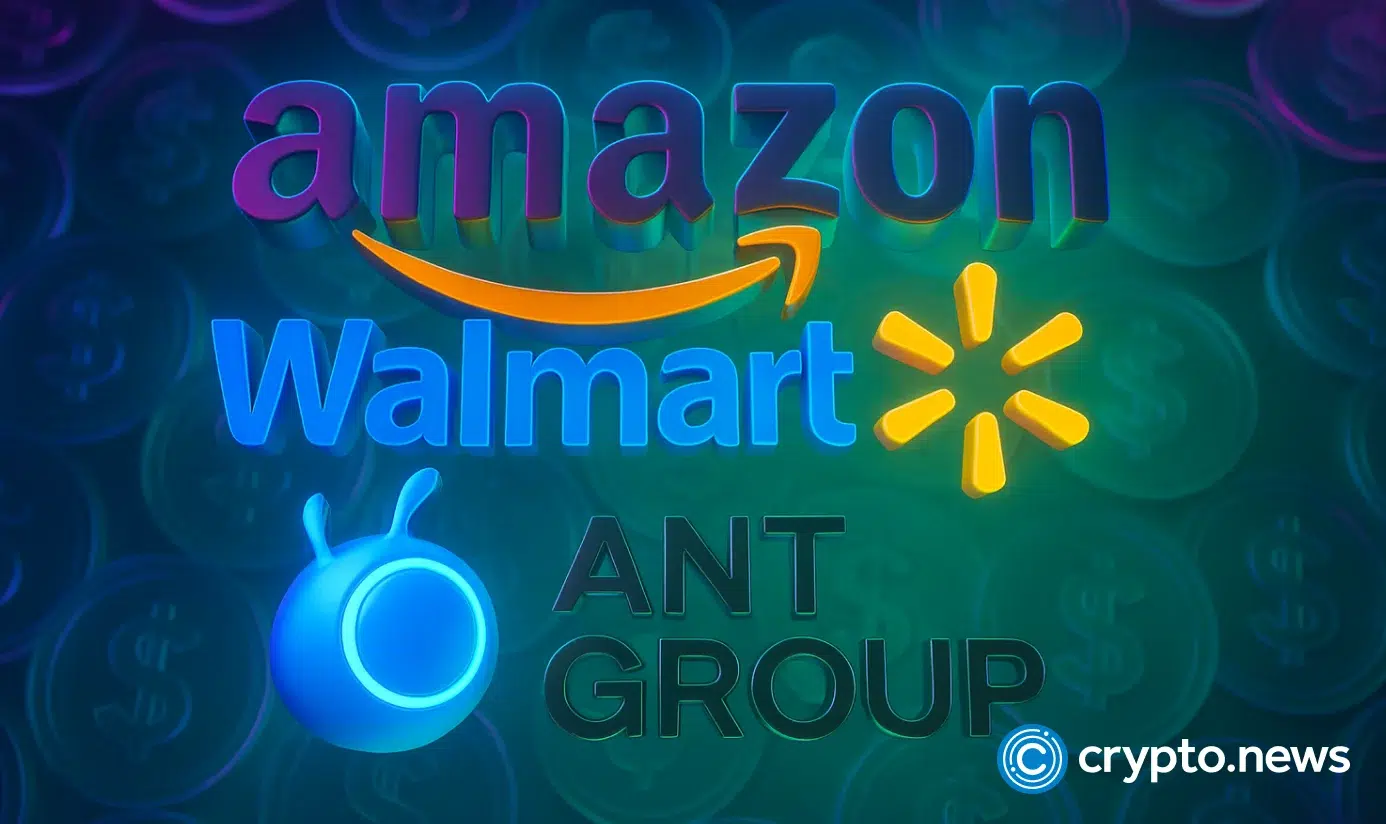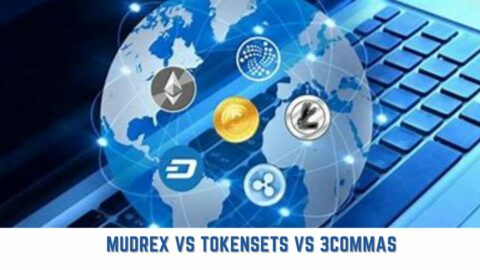
Are Amazon, Walmart, and Ant Group building a new monetary layer beneath commerce — where stablecoins replace dollars, eliminate middlemen, and reshape consumer behavior inside their own financial empires?
Retail giants warm up to stablecoins
Three global players in commerce and payments, Amazon, Walmart, and Alibaba’s Ant Group, are reportedly exploring stablecoins, the digital assets typically pegged to fiat currencies such as the U.S. dollar.
According to a June 2025 report from The Wall Street Journal, both Amazon and Walmart are holding internal discussions around launching their own stablecoins.
Amazon’s interest in digital currency is not new. In 2021, the company posted a job listing for a blockchain product lead focused on digital payments. Although the role did not result in a consumer-facing product, it reflected early engagement with blockchain-based financial tools.
Walmart’s engagement dates back to 2019, when it filed a patent for a blockchain-based U.S. dollar token aimed at supporting unbanked customers.
That project never launched, but the company has since revived its stablecoin ambitions and is now building out infrastructure for a proprietary coin.
Amazon, meanwhile, is said to be weighing multiple options, including the use of third-party stablecoins or developing its own. No formal roadmap has been shared, but internal discussions remain ongoing.
Ant Group, the fintech arm of Alibaba, appears to be further along. Its Singapore-based subsidiary, Ant International, has confirmed plans to apply for stablecoin issuance licenses in Hong Kong and Singapore.
Both jurisdictions have recently introduced formal regulatory frameworks, including Hong Kong’s Stablecoin Ordinance passed in May 2025, which takes effect in August.
Ant Group is also preparing to apply for a license in Luxembourg, signaling intent to expand into the European market.
While the three companies are at different stages, their efforts point to a common factor. Regulatory clarity around stablecoins is improving across major financial hubs.
In the U.S., the proposed Guiding and Establishing National Innovation for U.S. Stablecoins Act, or GENIUS Act, aims to create clear rules for reserve backing and compliance. The bill has received bipartisan support and remains under active consideration.
Across Asia, regulatory progress has been faster. Hong Kong and Singapore have already finalized stablecoin licensing regimes, giving firms like Ant Group a more immediate route to launch.
JPMorgan Chase’s JPMD filing hints at big-bank stablecoin ambitions
There are clear financial and operational incentives for companies like Amazon, Walmart, and Ant Group to explore issuing their own stablecoins.
One of the most immediate motivations is cost reduction. Merchants typically pay 2% to 3% in interchange fees on each card transaction.
For Amazon, which reported over $447 billion in global e-commerce revenue in 2024, that equates to an estimated $9 billion to $13 billion in annual fees.
Shifting even a portion of these payments to a blockchain-based system, where transactions cost just a few cents or less, could significantly reduce expenses. At scale, those savings could either boost margins or translate into lower prices for customers.
Simplifying international payments is another driver. Amazon serves global consumers, Walmart manages international supply chains, and Ant Group handles payments across borders through Alipay.
In 2024, Ant processed over $1 trillion in transactions, with one-third routed through its in-house blockchain platform, Whale.
Stablecoins can move across borders instantly without requiring expensive wire transfers or currency conversions, creating faster, cheaper, and more reliable payment flows in regions where banking infrastructure is limited.
A proprietary stablecoin also enhances data control. When users pay through bank cards, some transaction data remains with third-party providers.
If a company like Amazon issued its own currency for use across its ecosystem, it would retain full visibility into customer spending behavior.
That data could be used to refine recommendations, improve logistics, and shape marketing campaigns across Amazon’s core platform, subsidiaries, or partners.
Stablecoins also create financial upside through reserve holdings. To maintain price stability, issuers must hold equivalent fiat reserves, often in government bonds or cash. With interest rates still elevated in 2025, those reserves can yield meaningful returns.
For example, if $10 billion worth of a stablecoin is backed by the U.S. Treasuries yielding 5%, the issuer earns $500 million annually in interest.
This float income mirrors how banks profit from deposits and could become a major revenue stream for companies with large-scale stablecoin adoption.
There is already precedent for this approach. JPMorgan Chase has been active in the blockchain space for years, and its stablecoin infrastructure is evolving.
The bank’s Kinexy platform, formerly known as Onyx, has already processed over $1.5 trillion in interbank payments using JPM Coin, a private digital token backed 1:1 by the U.S. dollar, British pound, or euro.
In June 2025, JPMorgan filed a new U.S. trademark application for the term “JPMD,” outlining a wide range of digital asset services, including crypto trading, transfers, clearing, and payment processing.
While the filing does not explicitly mention the word “stablecoin,” its scope has sparked speculation that the bank may be preparing to expand its digital currency offerings.
Hence, a well-managed proprietary stablecoin could provide the same benefits to tech and retail firms looking to improve efficiency and capture new value from payments.
Cutting fees is the easiest way to unlock billions
Stablecoins have quietly become a foundational layer of the global digital economy. With a market cap now exceeding $250 billion, these tokens play a central role in payments, remittances, and cross-border transfers, offering a digital alternative to traditional banking systems.
The current market is dominated by a handful of established players. Tether (USDT) remains the most widely used stablecoin, especially on international exchanges.
USD Coin (USDC), issued by Circle in partnership with Coinbase, is often viewed as a more transparent and regulator-aligned option.
Other stablecoins, such as Pax Dollar (USDP), MakerDAO’s (DAI), and Binance USD (BUSD), serve more limited or specialized use cases. BUSD saw a sharp decline in usage in 2023 after regulatory action against its issuer.
More recently, PayPal launched PayPal USD (PYUSD), although adoption remains modest compared to the leading incumbents.
Most of these tokens are pegged to the U.S. dollar, which has emerged as the preferred settlement currency in crypto markets, even in regions where it is not the local tender.
If Amazon or Walmart were to introduce their own stablecoin, it would mark the entry of globally recognized consumer brands into a space historically driven by fintech firms and crypto-native platforms.
The user experience may not even feel like crypto. Customers could view balances in Amazon Coin or Walmart Pay directly within existing apps, use them for everyday purchases, and receive loyalty rewards or discounts, all without engaging with the underlying technology.
Such a shift could have broader implications for payments infrastructure. A widespread move toward retailer-issued stablecoins may reduce reliance on credit card networks, which currently collect fees on every transaction. Merchants could choose faster, lower-cost payment rails that settle instantly, bypassing intermediaries.
Banks could also face pressure if consumers begin storing balances in merchant wallets instead of traditional checking accounts.
Several major U.S. banks, including JPMorgan, Bank of America, and Citi, have reportedly explored the idea of a jointly issued digital dollar as a way to respond to private stablecoin expansion.
At the policy level, lawmakers and advocacy groups have raised concerns.
U.S. Senator Elizabeth Warren and multiple consumer organizations have warned that stablecoins issued by retail giants could allow companies to consolidate control over payments, track spending habits more deeply, and influence consumer behavior in ways that sidestep existing financial regulation.
Critics argue that letting commercial firms issue digital money at scale blurs the line between commerce and banking, a separation historically designed to protect financial stability and consumer autonomy.
In China, authorities have already taken a more centralized route. The government’s e-CNY, a central bank digital currency, is operational and would likely limit how Ant Group’s stablecoin could be used domestically.
Other countries may follow with accelerated CBDC efforts, either to preserve monetary oversight or to match the technical capabilities of private issuers.
Experts say it’s not if, but when — and how
crypto.news reached out to Blake Jeong, CEO of IOST, Chuck Zhang, CFO of PolyFlow, and Josip Rupena, CEO of Milo, to understand how seriously Amazon, Walmart, and Ant Group are considering stablecoins, and what the wider impact of their potential entry could be.
While none of the companies have publicly confirmed their intentions, all three experts agree that discussions are likely well beyond the exploratory stage.
Jeong pointed out that the economic incentive is simply too large to ignore, especially for businesses that rely heavily on tight margins and high transaction volumes.
“There’s a strong likelihood they’re at least testing stablecoin strategies behind the scenes. For Amazon and Walmart, who operate on razor-thin margins and pay billions in card processing fees annually, stablecoins are a logical next step.”
Rupena approached it from the infrastructure angle. In his view, the necessary foundation already exists within these companies’ ecosystems, making the move more a matter of timing than strategy.
“I don’t think it’s a matter of if these companies pursue stablecoins, but when. Amazon, Walmart, and Ant Group have already built the infrastructure. They control wallets, own massive ecosystems, and are always looking for ways to streamline payments.”
Zhang added that regulatory momentum, particularly the GENIUS Act in the U.S., is now creating the kind of policy certainty that these companies need to move forward.
“All three of these companies have the volume and the user base to support their venture into stablecoins, especially now that the GENIUS Act clearly defines stablecoins as payment coins. It falls right into these firms’ core business.”
Beyond intent, all three experts mentioned the potential to reduce dependence on card networks and lower the costs of everyday transactions. Jeong described the shift as fundamental to payment economics.
“Stablecoins could drastically reduce the $225 billion paid in merchant fees by enabling near-zero-cost peer-to-peer settlement, especially at scale. That’s not just a minor improvement; it’s a margin-transforming shift.”
Rupena echoed the point, putting the scale of savings into clearer terms.
“When you’re processing hundreds of billions in payments, even a 1% savings translates to billions of dollars. Traditional rails are expensive because of intermediaries. Stablecoins settle nearly instantly, at a fraction of the cost.”
Zhang acknowledged the efficiency but noted that success will depend heavily on how frictionless the experience is for users.
“On Amazon’s volume alone, we’re talking tens of billions in potential annual savings. But the checkout flow needs to prioritize stablecoin payments without friction, otherwise users will default to what’s familiar.”
The technical readiness is not in doubt. Instead, the challenges lie in integration, scale, and regulatory coordination.
Jeong noted that many of the components already exist, but deploying them across global markets involves much more than plugging in blockchain infrastructure.
“They’d need scalable, compliant, and interoperable networks, ideally ones that already support RWAs, subnets, and programmable compliance. The tech exists, but building it at Amazon or Walmart scale requires deep integration and jurisdiction by jurisdiction legal readiness.”
Zhang pointed out that some of the most basic expectations of retail finance, such as refunds and chargebacks, still lack clear mechanisms in crypto-based systems.
“Refunds, chargebacks, and dispute resolution are all areas that need proper attention before these solutions can scale. Blockchain infrastructure must also be robust enough to handle traffic spikes during peak seasons.”
Rupena agreed, adding that even with the right blockchain rails, companies will still need to address operational details like custody, fraud controls, and compliance layers.
“These companies would need to build or integrate secure custody solutions, fraud prevention systems, and compliance tools. It’s technically possible today, but the scale and regulatory complexity are what make it difficult.”
On adoption, all three experts stressed that success will come from invisibility, not explanation. In other words, consumers don’t need to understand stablecoins to use them. They just need a compelling reason to opt in. Jeong pointed to platform-native integration as the key factor.
“Adoption will come when stablecoins are embedded into platforms people already use. That’s where Ant, Amazon, and Walmart have a massive advantage.”
Rupena took that further, suggesting that habit formation could happen quickly if the user experience is aligned with existing loyalty programs and everyday payments.
“If Amazon gives you a wallet, offers a discount for using it, and ties it to your Prime account, you’ll use it without thinking about what’s under the hood. Same with Walmart. These companies know how to drive user behavior at scale.”
Zhang noted that this is exactly where others have struggled. PayPal’s stablecoin launch, for instance, showed that technical rollout alone is not enough.
“PayPal’s PYUSD is instructive here. They’ve dangled a 3.7% yield to encourage usage, yet adoption has still been slow. Mainstream consumers need extra incentive to shift habits. That means perks, seamless UX, and zero friction.”
As for how this affects incumbents, Jeong argued that if stablecoin rails succeed, they could gradually erode the role of traditional processors.
“For Visa and Mastercard, this could be existential. Stablecoin rails remove the need for intermediaries that take a cut of every transaction. Whoever builds the next generation payment layer owns not just the checkout but the monetary operating system behind it.”
Zhang agreed that Visa and Mastercard would feel the impact, though he suggested they are unlikely to sit still.
“The moment these firms start bypassing Visa and Mastercard, even for a small percentage of their users, the impact will be felt. But Visa is also investing heavily in their own stablecoin rails. It’s going to be a race, one where consumer behavior and integrated incentives will decide the winner.”
Compliance, in the end, will likely determine not just if these companies enter the space, but how their stablecoins are structured. Jeong explained that regulatory design will heavily influence architecture from day one.
“Any stablecoin from these giants would likely need full reserve backing, real-time transparency, and jurisdictional safeguards, especially in light of the GENIUS Act and upcoming MiCA enforcement.”
Zhang described it as a shift from tech-led experimentation to finance-grade accountability.
“The GENIUS Act dictates that issuers must hold massive liquid reserves and undergo regular audits. That’s a significant shift, more like operating a bank than a tech firm. The regulatory burden could heavily influence how their stablecoins are structured.”
Rupena noted that regulatory volatility is the biggest uncertainty and predicted that these companies would likely begin with conservative, closed-loop models before expanding.
“If Walmart or Amazon moves forward, they’ll likely start with a closed ecosystem, full transparency, and strict oversight built in from day one.”
Whether these giants move toward full public launches or continue testing internally, the shape of the future is already changing. Payments are no longer controlled solely by banks and card networks.
What happens next will depend on how regulators respond, how these platforms execute, and whether users are ready to transact in currencies designed by companies they already trust.




